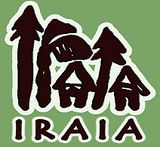Note: This piece was first published as my column piece in the Nov. 15, 2002 issue of Northern Dispatch Weekly. It is being reposted here with very minor edits.
THIS IS A FOLLOW-UP on the piece I wrote last week in this column, about Ilocano and other local languages. I would have liked to use “Northern Philippine languages,” not as an off-the-cuff phrase but an exact taxonomic category established through linguistic studies.

Some might be surprised of this talk about “Philippine languages,” on the belief that there is only one Philippine language (which many consider to be Pilipino), or just a few languages that may include Ilocano and Cebuano, while all the others are “dialects.”
There is in fact among us a very persistent notion. That is, if a certain variety of speech is not widely accepted and used, then it is a “dialect,” while another speech variety that has become a national or regional standard is called a “language.” One doesn’t have to travel far to hear apologetic comments such as, “Pasensya dagiti saan a makaawat, mas nairwamak gamin nga agsao iti dialect mi nga Ilokano (or Kankanaey-Bontoc, or Kalinga, etc.).” Continue reading “Languages and dialects”
